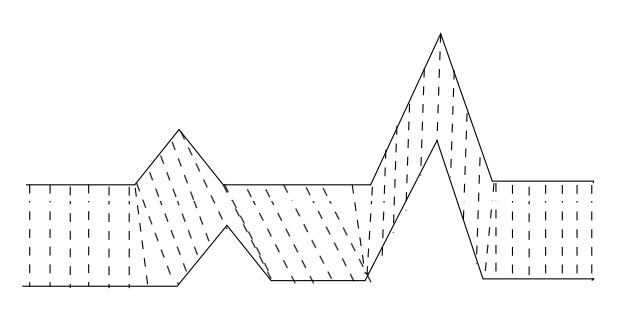 | ||
In time series analysis, dynamic time warping (DTW) is an algorithm for measuring similarity between two temporal sequences which may vary in speed. For instance, similarities in walking could be detected using DTW, even if one person was walking faster than the other, or if there were accelerations and decelerations during the course of an observation. DTW has been applied to temporal sequences of video, audio, and graphics data — indeed, any data which can be turned into a linear sequence can be analyzed with DTW. A well known application has been automatic speech recognition, to cope with different speaking speeds. Other applications include speaker recognition and online signature recognition. Also it is seen that it can be used in partial shape matching application.
Contents
- Implementation
- Fast computation
- Average sequence
- Supervised Learning
- Alternative approach
- Open Source software
- Spoken word recognition
- Correlation Power Analysis
- References
In general, DTW is a method that calculates an optimal match between two given sequences (e.g. time series) with certain restrictions. The sequences are "warped" non-linearly in the time dimension to determine a measure of their similarity independent of certain non-linear variations in the time dimension. This sequence alignment method is often used in time series classification. Although DTW measures a distance-like quantity between two given sequences, it doesn't guarantee the triangle inequality to hold.
In addition to a similarity measure between the two sequences, a so called "warping path" is produced, by warping according to this path the two signals may be aligned in time. The signal with an original set of points X(original), Y(original) is transformed to X(warped), Y(original). This finds applications in genetic sequence and audio synchronisation. In a related technique sequences of varying speed may be averaged using this technique see the average sequence section.
Implementation
This example illustrates the implementation of the dynamic time warping algorithm when the two sequences s and t are strings of discrete symbols. For two symbols x and y, d(x, y) is a distance between the symbols, e.g. d(x, y) =
We sometimes want to add a locality constraint. That is, we require that if s[i] is matched with t[j], then
We can easily modify the above algorithm to add a locality constraint (differences marked in bold italic). However, the above given modification works only if
Fast computation
Computing the DTW requires
Average sequence
Averaging for Dynamic Time Warping is the problem of finding an average sequence for a set of sequences. The average sequence is the sequence that minimizes the sum of the squares to the set of objects. NLAAF is the exact method for two sequences. For more than two sequences, the problem is related to the one of the Multiple alignment and requires heuristics. DBA is currently the reference method to average a set of sequences consistently with DTW. COMASA efficiently randomizes the search for the average sequence, using DBA as a local optimization process.
Supervised Learning
A Nearest Neighbour Classifier can achieve state-of-the-art performance when using Dynamic Time Warping as a distance measure.
Alternative approach
An alternative technique for DTW is based on functional data analysis, in which the time series are regarded as discretizations of smooth (differentiable) functions of time and therefore continuous mathematics is applied. Optimal nonlinear time warping functions are computed by minimizing a measure of distance of the set of functions to their warped average. Roughness penalty terms for the warping functions may be added, e.g., by constraining the size of their curvature. The resultant warping functions are smooth, which facilitates further processing. This approach has been successfully applied to analyze patterns and variability of speech movements.
Open Source software
Spoken word recognition
Due to different speaking rates, a non-linear fluctuation occurs in speech pattern versus time axis which needs to be eliminated. DP-matching, which is a pattern matching algorithm discussed in paper "Dynamic Programming Algorithm Optimization For Spoken Word Recognition" by Hiroaki Sakoe and Seibi Chiba, uses a time normalisation effect where the fluctuations in the time axis are modeled using a non-linear time-warping function. Considering any two speech patterns, we can get rid of their timing differences by warping the time axis of one so that the maximum coincidence is attained with the other. Moreover, if the warping function is allowed to take any possible value, very less distinction can be made between words belonging to different categories. So, to enhance the distinction between words belonging to different categories, restrictions were imposed on the warping function slope.
Correlation Power Analysis
Unstable clocks are used to defeat naive power analysis. Several techniques are used to counter this defense, one of which is dynamic time warp.
